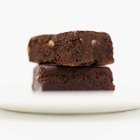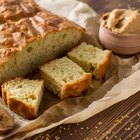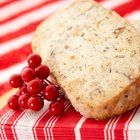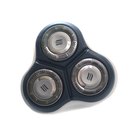
Olha_Afanasieva/iStock/Getty Images
Vintage cookbooks provide a fun read for modern cooks, and are occasionally valuable collectibles or family heirlooms in their own right. Cooking from them can pose an exercise in frustration, though, because ingredients that were common and well known when the recipe was written are sometimes now unavailable. For example, you'll encounter "Spry" shortening in many a commercial or handwritten recipe. That's not an adjective or a special type of shortening, but a commercial brand that enjoyed success for several decades.
Crisco's Rival
Soap company Procter & Gamble derived much of its profit in the 1920s and 1930s from sales of its vegetable-oil shortening, Crisco. Rival firm Lever Brothers launched Spry shortening in 1936 as a rival to Crisco, positioning it as an easier-to-use and -- in those frugal days -- longer lasting alternative. The product's deliberately folksy sales message was typified by the fictional "Aunt Jenny," given a face and a radio voice by actress Edith Spencer. Eventually Procter & Gamble's deeper pockets prevailed, and Lever dropped Spry along with other underperforming products in the 1970s. The company's recipes still turn up frequently in modern newspapers, as readers attempt to re-create lost family favorites.
Substituting for Spry
At the time of its mid-’30s launch, Spry boasted of being whiter, softer and longer lasting than its better known rival. With the passage of time, those differences eroded, and modern shortenings are comparable in most respects. Feel free to use your regular brand of shortening in any vintage Spry recipe. The end result should be essentially the same with any brand.
Related Articles

The History of Skechers Shoes

Can You Substitute Yogurt for ...

Croton Watches History

Does Shortening Go Bad?

The History of Nestle Chocolate

How Is Emulsified Shortening Used in ...

How Much Melted Shortening Do I Use in ...

The History of Converse Shoes

How to Make Your Own Hand Lotion With ...

How Much Applesauce Do You Substitute ...

Substitution for Oil in Baking Brownies

Can Jiffy Baking Mix Be Substituted As ...

How Many Calories Are in Jiffy ...

Butterfinger Candy Bar Facts

How to Buy Perfume Testers

How to Use Shortening Instead of Oil ...

Can You Substitute Vegetable Shortening ...

How Often Should You Replace Blades in ...

How to Substitute Margarine for Butter ...

History of the Gleaner Combine
References
Writer Bio
Fred Decker is a trained chef and prolific freelance writer. In previous careers, he sold insurance and mutual funds, and was a longtime retailer. He was educated at Memorial University of Newfoundland and the Northern Alberta Institute of Technology. His articles have appeared on numerous home and garden sites including GoneOutdoors, TheNest and eHow.
Photo Credits
Olha_Afanasieva/iStock/Getty Images